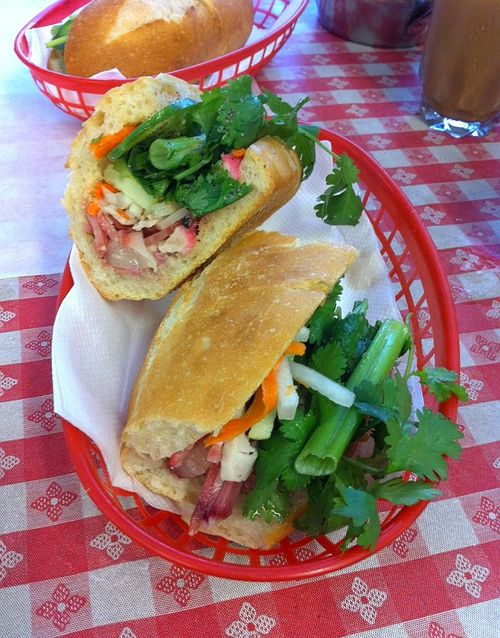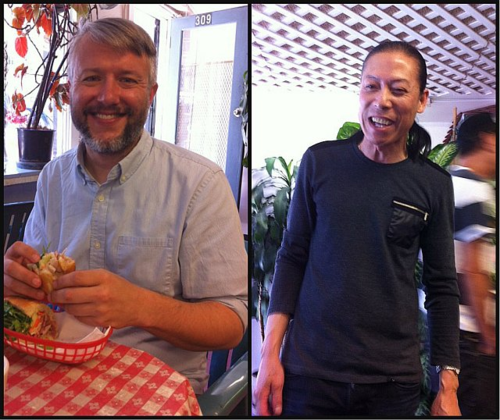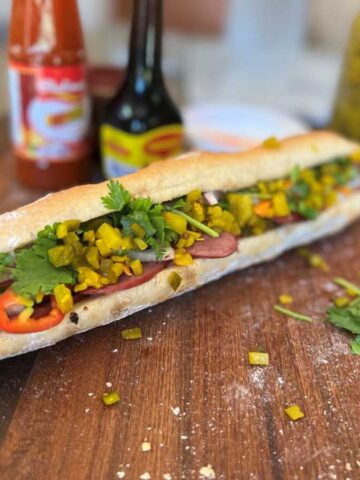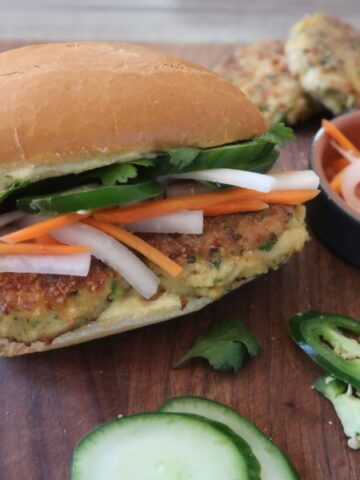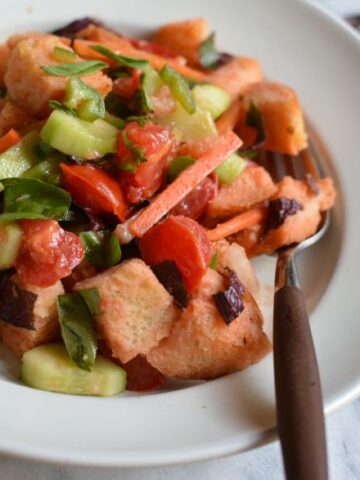A couple weeks before the book launch, one of my favorite writers called and asked if I wanted to go on a banh mi expedition to address these questions: What makes good banh mi? Why is it beloved?
Of course! I’ve long admired Jonathan Kauffman’s elegant and thoughful food reporting and was happy to learn that he’d recently joined the San Francisco Chronicle as a staff writer. We’d chatted about tofu culture and a bunch of other things so the thought of hunting down delicious banh mi was not work. It was my kind of dectective work.
We spent most of the Monday before the book released sampling banh mi in San Francisco and Oakland, tasting about a dozen (12!) total. They ranged from the super traditional dac biet (thit nguoi) to ones that featured fried fish cakes, tofu skin and spicy tuna fish salad. We discussed the sandwich’s history, ingredients, as well as construction.
I’d brought a bottle of Maggi Seasoning sauce in my handbag in case the banh mi we ate didn’t have enough zip. I used it at one spot where things were a bit bland and sweet. Jonathan observed all of that and more. He poured it all into an amazing story that ran in the San Francisco Chronicle this weekend.
No one has ever captured my culinary obsessions in such a charming and thorough manner. It was a full page.
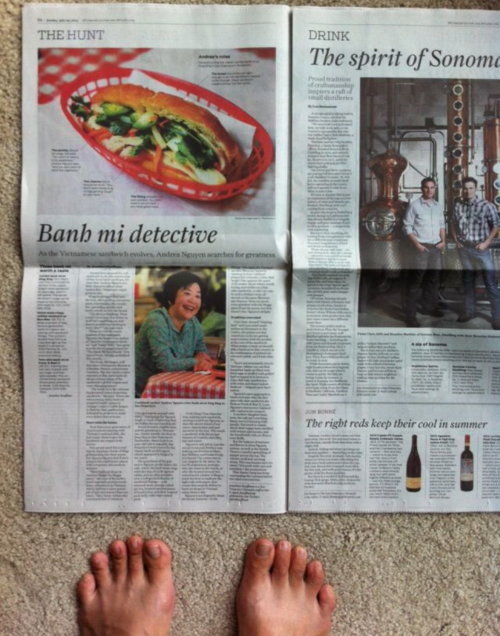
Take a read (a link is at the bottom of this post), and you’ll see that our favorite spot from the outing was Sing Sing Sandwich Shop in San Francisco’s Tenderloin neighborhood.
We had a great time chatting with owner Harry Lam, who opened the shop since 1990. Up until a couple years ago, he only served the dac biet and recently added several others for variety. A sweet woman named Dung Tran assembled the sandwiches behind the counter; she humorously called him “the boss.” Harry’s secret weapon was a pork belly that gave his banh mi an unctuous flavor and bit of funk. He baked it in paper and per tradition, turned it a happy pink with red food coloring. (In The Banh Mi Handbook, my modern take is the garlic pepper pork tenderloin on page 40.)
Harry was so taken with our interest that he got some freshly made belly and prepared sandwiches for us himself. “The flavor and fragrance is extra special when the meat is fresh,” he said.
His sandwiches were more savory than sweet, the way he liked it and remembered it from Vietnam. He tucked a little green onion in to cut the meat’s richness. I wished there was a little less cilantro and more pickle to balance things out. Nevertheless, it was a damn good banh mi, not slapdash.
We talked bread and Harry revealed that he didn’t care for the lightweight baguettes that most banh mi shops use. They fall apart. His rolls, which Jonathan and I encountered elsewhere in San Francisco, reminded me of ones in Saigon last January, when I was with Robyn Eckhardt for her Wall Street Journal story on Saigon’s best banh mi.
There are many benchmarks for good banh mi (Jonathan sums them up in the story) but aside from the sandwich itself, I realized that what makes a good banh mi is also where it comes from, who makes it. Like a good deli, a banh mi shop is ideally also a neighborhood hang out where there are as Harry says, “lots of regulars.” I really enjoyed hanging out with Jonathan and meeting Harry because they helped to make a most excellent banh mi experience.
So for me good banh mi is about not only about the sandwich itself, but also the people you share it with. That takes banh mi from good to great.
Jump to Jonathan Kauffman’s story, “Banh Mi Detective: Author shows what makes the Vietnamese sandwich so special” (San Francisco Chronicle, 7/18/14)
What do you think makes a good banh mi? Aside from your own kitchen, where do you like to get a Vietnamese sandwich? (It does not have to be in the Bay Area.)
Related posts:













